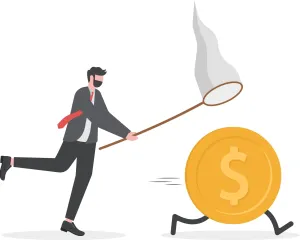Financial planners use the term “holistic planning” frequently. It’s meant to indicate that they consider the client’s short- and long-term life goals and the future they visualize. According to Fidelity Investments Holistic Wealth Planning is continuous and considers two dozen aspects of client wealth objectives.
The Valuation Reality Gap
Only one of those aspects is ownership of a business. This raises the question “If a typical business owner has 50% of their net worth in a business, is it really just 1/24 of their planning?”
Of course not. I’m exaggerating for effect, but there is an uncomfortable truth about financial planning for business owners.
When we ask financial planners about their assumptions regarding business value, the great majority (almost all) reply that they use a value provided to them by the client. Unfortunately, most business advisors estimate that the average owner’s impression of their company’s value is at least 35% too high.
An owner is planning on a $3,000,000 nest egg in retirement. He estimates that $1,500,000 will come from the net proceeds (after paying capital gains tax) of selling his business for $2,000,000.
But 90% of businesses that size are sold on an asset basis. That could bump the tax rate from under 25% to something closer to 40%. If he has overvalued by the “average” of 35%, a $1,300,000 sale would net $780,000.
Impact on Retirement Goals
Now his nest egg is $720,000 short of goal. Retiring on $2.3 million isn’t exactly poverty, but it would require substantial changes to the anticipated goals.
That is why financial planning for business owners can’t be holistic if it doesn’t include the value of their business. That value should be confirmed by a third party.
Exit planning is the critical final component of a business owner’s wealth strategy. A business requires different tax strategies, risk management and timing assumptions from simply calculating around a pension. Even an appraised value can range widely between different transition strategies.
Holistic Planning in Exit Considerations
How is estate planning affected by the disposal of the business? Does it employ one or more children? Just as importantly, does it not employ one or more children? How can the business value in the estate be balanced between fair and equal? In the most extreme case, will the business be passed down as part of the estate? In that case its value may not be included as part of the owner’s wealth at all.
Will the business be sold to a third party, or as part of a management buyout or ESOP? The proceeds may be realized all at once, or over a long period of time. Is there value for any real estate involved? (A new owner may or may not wish to purchase the real property.)
Holistic planning for a business owner is far more complex than for an employed individual. It’s almost like having a second client in the room. If the planning doesn’t consider the myriad of complexities surrounding monetization of an illiquid asset (the company), it may not be considering the biggest single factor in the client’s financial future.
John F. Dini develops transition and succession strategies that allow business owners to exit their companies on their own schedule, with the proceeds they seek and complete control over the process. He takes a coaching approach to client engagements, focusing on helping owners of companies with $1M to $250M in revenue achieve both their desired lifestyles and legacies.





